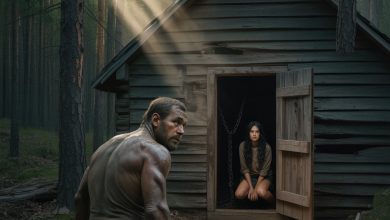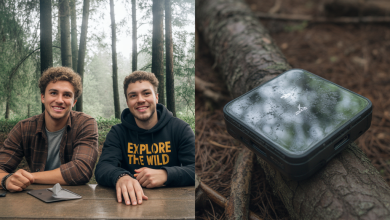Genie: The Feral Child Who Taught Us About Humanity, and How Humanity Failed Her
On a November morning in 1970, a frail, nearly blind woman walked into a Los Angeles welfare office, holding the hand of a girl. The girl was small and thin, and she moved strangely, shuffling forward with her arms held out in front of her like a rabbit, her eyes vacant and unfocused. She was 13 years old, but she weighed only 59 pounds. She did not speak.
She did not make eye contact. She seemed to exist in a silent, invisible bubble, untouched by the world around her. The social worker who first saw her knew immediately that this was not a typical case of neglect. This was something far darker. This was the discovery of “Genie,” a child who had been raised in near-total isolation, and whose story would become one of the most heartbreaking and ethically complex cases in modern history.
For more than a decade, Genie had been a prisoner in her own home. Her father, Clark Wiley, a man with a deep-seated paranoia and a tyrannical control over his family, had decided his youngest daughter was “mentally retarded.” At around 20 months old, he removed her from the world. She was confined to a small back bedroom, often strapped to a potty chair during the day and locked in a wire-sided crib at night. She was fed baby food and forbidden from making any noise. If she cried or whimpered, her father would not speak to her; he would bark and growl at her like a dog, terrifying her into silence.
The house on Golden West Avenue in Temple City, California, became a crypt. The blinds were always drawn. No one was allowed to speak above a whisper. Genie’s mother, Irene, who was also a victim of her husband’s abuse, became a passive accomplice, too beaten down and terrified to intervene. In this prison of silence, Genie grew up without language, without love, without human connection. She was a ghost in her own life.
Her rescue at age 13 was a shocking event that captivated the world. Here was a real-life “feral child,” not raised by wolves in the jungle, but in a suburban American home. For scientists, especially linguists and psychologists, Genie was a once-in-a-lifetime opportunity. She was a living test of the “critical period hypothesis”—the theory that if a child doesn’t learn language by a certain age, they never will. Could a mind that had never known words still be taught to speak?
What followed was a collision of compassion, science, and human ambition. Genie was taken to Children’s Hospital Los Angeles, where a multidisciplinary team began the slow, painstaking process of trying to bring her into the world. In the beginning, there were moments of hope. Away from her abusive father, Genie began to show a flicker of curiosity. She learned to walk with more stability, to use the toilet, and to dress herself. She learned a small vocabulary of single words—”blue,” “orange,” “mother”—and could communicate through basic gestures.
But the lines between her well-being and the scientific research quickly blurred. She was moved from the hospital into the home of one of her therapists, and then into the home of the lead researcher on her case. She was both a foster child and a living experiment. Every interaction was documented, every sound she made was recorded, every small step forward was analyzed for data. The infighting among the researchers over control of her case became bitter and personal, with accusations of scientific ambition overriding Genie’s best interests.
Through it all, Genie’s progress was slow and limited. While she could learn words, she could never grasp grammar. The invisible architecture of language—the ability to form questions, use tenses, or structure a sentence—eluded her. The critical window, it seemed, had closed. As the stunning scientific breakthrough that researchers had hoped for failed to materialize, so did the funding. In 1975, the National Institute of Mental Health, citing ethical concerns and a lack of scientific rigor, pulled its grant. The project was over. And for Genie, the second, and perhaps most tragic, abandonment of her life was about to begin.
Without the research funding, Genie was moved from the only stable homes she had known back into the foster care system. The system was utterly unprepared to handle her profound trauma and special needs. She was placed in a series of homes, some of which were neglectful and even abusive. In one home, she was severely punished for vomiting. That traumatic event caused her to regress completely. Fearing to make a sound, she stopped speaking entirely, retreating back into the silence that had defined her childhood.
The world that had once been so fascinated by her had moved on. The researchers, the journalists, the documentary crews—they were all gone. Genie, the girl who was once a global sensation, was now just another forgotten ward of the state. Her story is a haunting and devastating cautionary tale. It is not just about the horrific abuse of one family, but about the failure of a system that, after “rescuing” her, was unable to provide her with a life of dignity and care. She was a scientific curiosity that, when no longer useful, was discarded.
Today, Genie lives in an undisclosed care facility in California. She is non-verbal, and her life is quiet and private. Her story does not have a happy ending. It is an uncomfortable and tragic testament to the devastating and permanent effects of extreme abuse, and a powerful indictment of a society that is often more interested in the spectacle of a miracle than the long, difficult, and expensive work of true healing.



